Release time :2024-07-01
Source:support@yingchitech.com
Scan:704
Clinical Support Department of Shenzhen Yingchi Technology Co.,Ltd.
Lack of motivation is one of the typical features in major depressive disorder (MDD), which is manifested by reduced willingness to make efforts. The dorsolateral prefrontal cortex (DLPFC) plays a key role in goal-directed behavior and is therefore a potential target for regulating effort motivation.
To explore the effects of TMS on the effort motivation and reward expectations of MDD patients and to further reveal the role of the left DLPFC in this process, Professor Zhang Dandan's team from the Institute of Brain and Psychological Sciences of Sichuan Normal University, in collaboration with YINGCHI, used TMS and ERP technology to provide neuroelectrophysiological evidence for TMS treatment of MDD and verified the potential effects and mechanisms of DLPFC in regulating motivation.
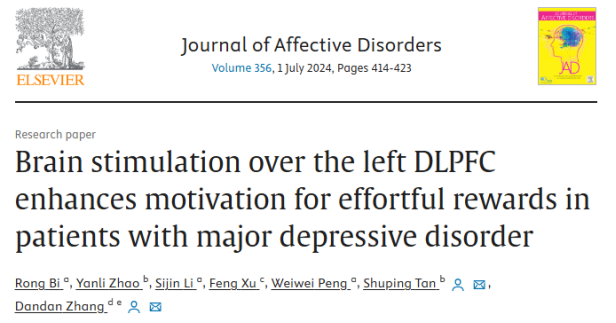
Subjects: 50 outpatient MDD patients.
Exclusion criteria: other neurological or psychiatric disorders, epileptic seizures or brain damage, alcohol or drug dependence, left-handedness.
Effort-Expenditure for Rewards Task(EEfRT): Patients will be presented with a series of choice tasks on a computer screen, requiring them to make choices of varying effort values in the choice phase, then make the effort required for their choices (i.e., key presses) in the effort phase, and finally receive a reward in the feedback anticipation phase.

Procedure: Before the EEfRT, patients tested their maximum compression rate, then received TMS stimulation after becoming familiar with the task during practice, and then performed the formal task and collected ERP data. At the end of the experiment, each patient received compensation based on task performance.
Design: The study was an in-subject design in which all patients received two TMS treatments of active and sham stimulation, followed by an EEfRT task and EEG data collection after each session. After the task, patients were asked to have an interval time for 30 minutes, and the order of treatment was balanced (i.e., half of the patients received real TMS first, while the other half received sham TMS). The trials were performed in a fixed pseudo-random order.

Stimulation target: stimulate the left DLPFC, used YINGCHI TMS (M-100 Ultimate) with figure 8 coil
Stimulation parameters: Active TMS was applied at 10 Hz at 90 % of each participant’s rMT. Each 15-min session contained 30 trains, with each train lasting for 3.9s (a total of 1170 pulses). The intertrain interval was 26.1s. Sham TMS uses the same equipment but does not generate an actual magnetic field.
During sham session, the coil is at a 45° angle to the scalp.
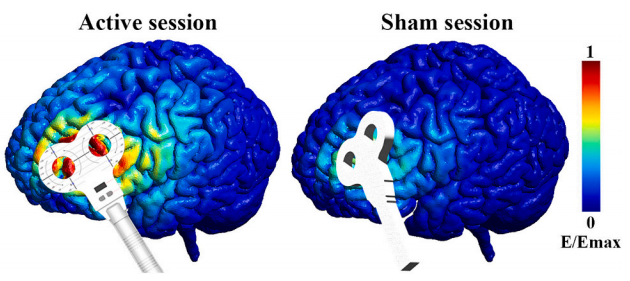
Behavioral data: The frequency of participants choosing the high-effort/high-reward option under different interventions was recorded.
ERP data: The EEG activity of the subjects at different stages of the task was recorded using an EEG (Brain Products, Germany) device during the EEfRT task.
The main effect of TMS stimulation was significant (p = 0.034), with patients being more willing to make effortful choices during active TMS treatment. The main effect of effort level was significant (p = 0.001), with patients being less willing to exert effort as the effort required increased (p < 0.05).
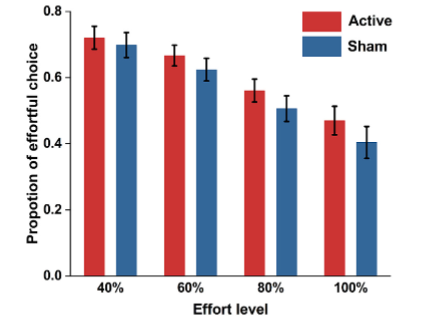
The main effect of TMS active and sham stimulation is significant
During active TMS treatment, the CNV amplitude and SPN amplitude produced by patients after choosing the high-effort/high-reward option were significantly higher than those of the low-effort/low-reward choice, but after sham TMS treatment, the patients produced There is no significant difference among the three waveforms.
The main effect of effort/reward choice was significant
Regardless of the active or sham stimulation group, the high-effort/high-reward option produced significantly larger P3, CNV, and SPN amplitudes than the low-effort/low-reward option.
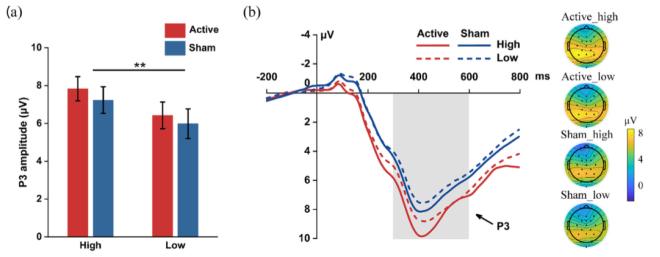
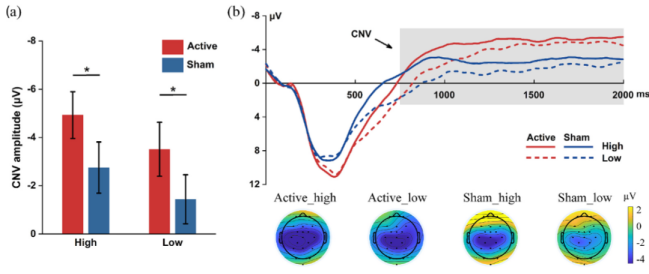
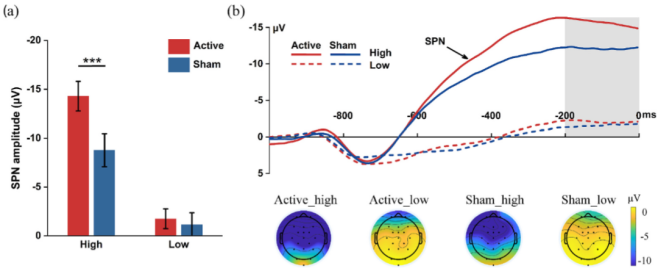
The above results suggest that TMS activation of the left DLPFC has a potential intervention effect on improving the motivation of MDD patients to work hard for rewards.
Regarding the effect of TMS on effort and reward anticipation, a possible explanation is that high-frequency rTMS stimulation on the left DLPFC increases dopamine release in the striatum or frontal cortex connected to the DLPFC. Previous studies have shown that dopamine release or dopaminergic neurons represent reward anticipation in effort-based decision-making. From a neurotransmitter perspective, TMS may promote dopamine release and then prepare for effort and reward anticipation.
The results of this study reveal the key role of the left DLPFC in preparing for effort and predicting the value of rewards in effort-based decisions, thus providing electrophysiological evidence for targeting this area to improve depressive symptoms of lack of motivation. This evidence can also be applied to the treatment of motivational symptoms in other neuropsychiatric diseases (Parkinson's disease, schizophrenia, etc.) to a certain extent.
1.This content is organized by the Clinical Support Department of Shenzhen Yingchi Technology Co.,Ltd. Criticisms and corrections are welcome. For reprint, please indicate the source.
2.Reference:
Bi, R., Zhao, Y., Li, S., Xu, F., Peng, W., Tan, S., & Zhang, D. (2024). Brain stimulation over the left DLPFC enhances motivation for effortful rewards in patients with major depressive disorder. Journal of Affective Disorders, 356, 414-423.